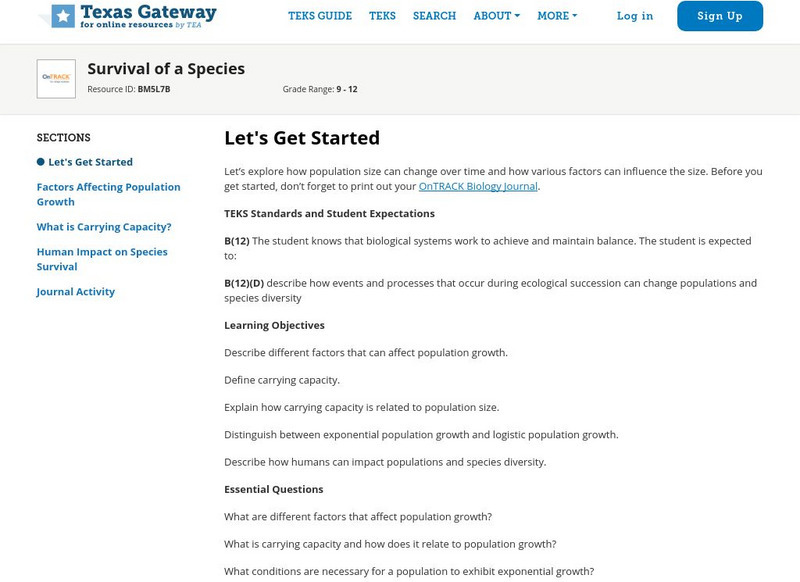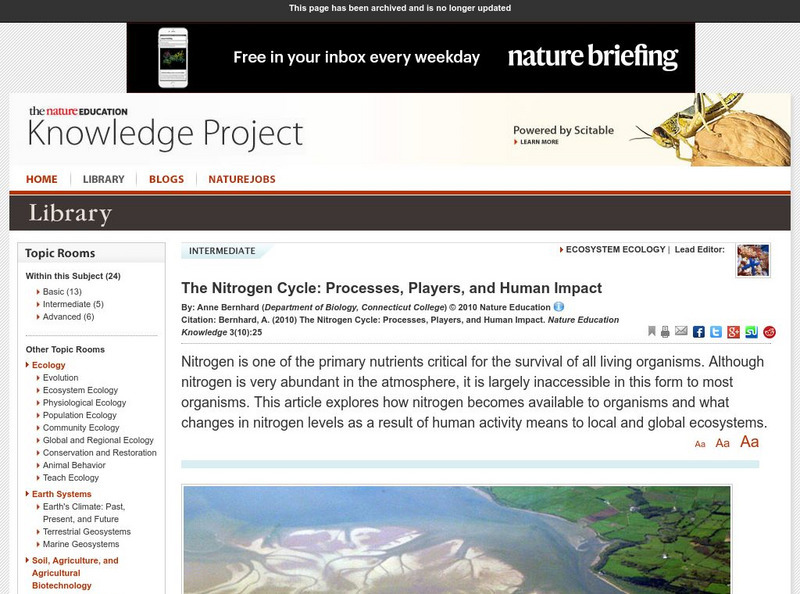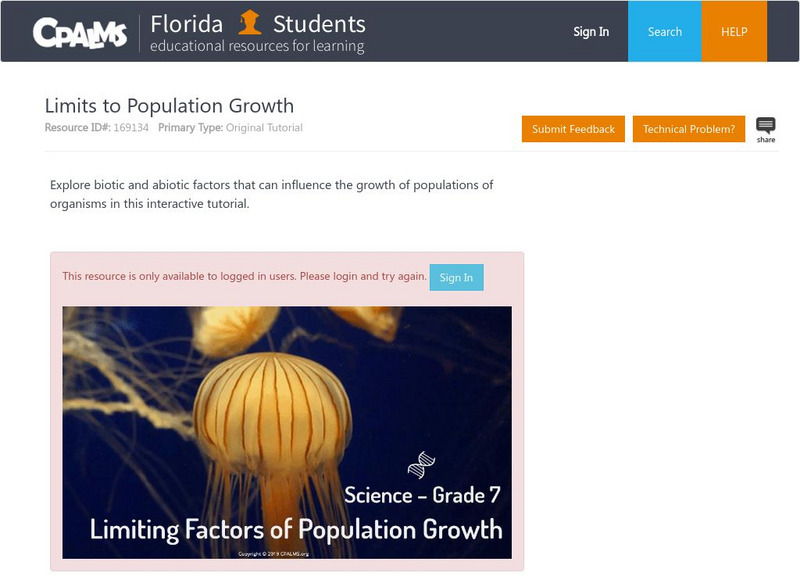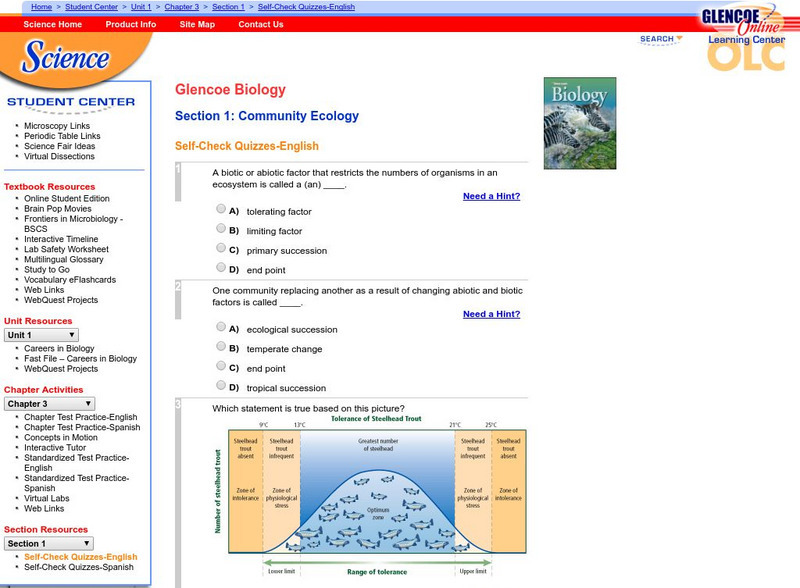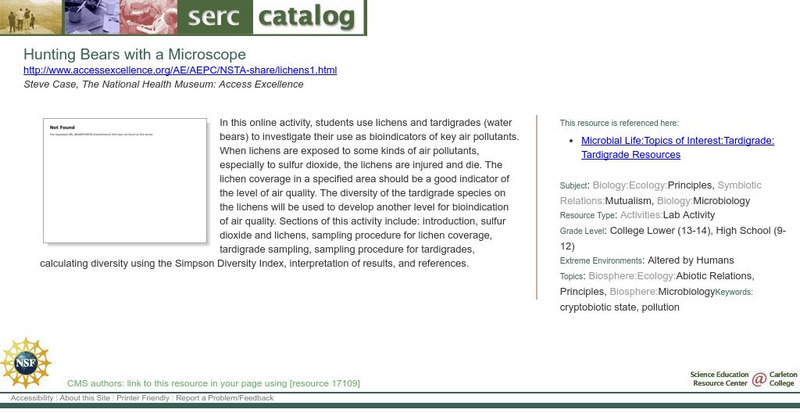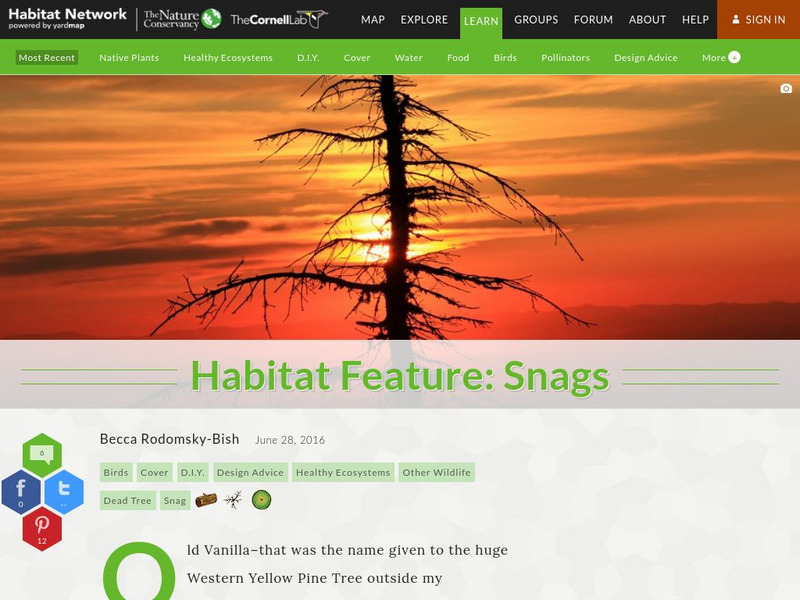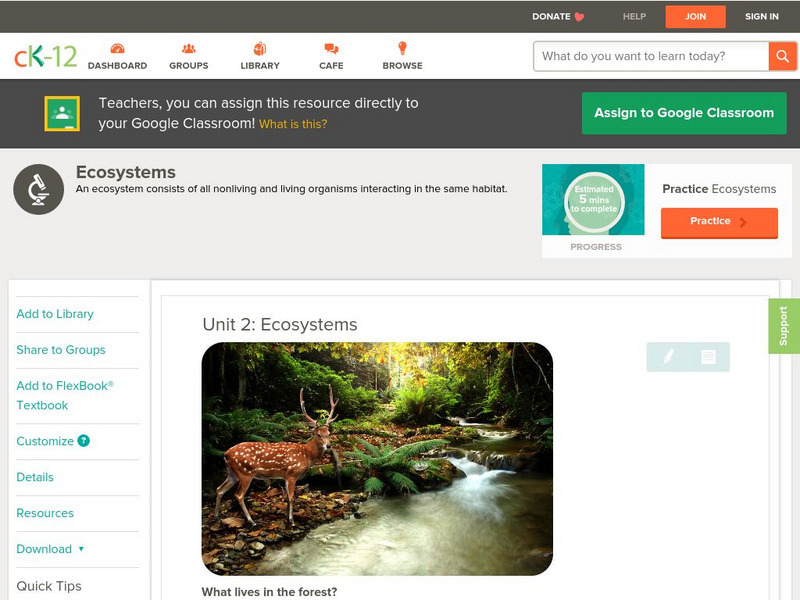Texas Education Agency
Texas Gateway: Survival of a Species
Given scenarios, illustrations or descriptions, the student will describe how long-term survival of species is dependent on changing resource bases that are limited.
The Wonder of Science
The Wonder of Science: 3 Ls3 2: Environmental Influence on Traits
Work samples, phenomena, assessment templates, and videos that directly address standard 3-LS3-2: environmental influence on traits.
Science Education Resource Center at Carleton College
Serc: Energy Pyramids in Different Biome Locations
A research activity where young scholars research the various biotic and abiotic factors that combine to make up a biome. The end product will be the creation of a PowerPoint presentation that identifies these factors and the creation of...
Science Education Resource Center at Carleton College
Serc: Plant Succession Field Investigation
This lesson is to be used as an introduction to ecosystems and plant succession. Students will observe both biotic and abiotic features of a selected site on a plot of wild land. They will take notes, make drawings, and collect samples...
Nature Research
Nature: The Nitrogen Cycle: Processes, Players, and Human Impact
Find out how nitrogen is cycled throughout the biosphere as it passes through the nitrogen cycle. Learn about the biotic and abiotic factors involved in the process as well as the implications of human activity on the nitrogen cycle.
Untamed Science
Untamed Science: Biology: World Biomes: Lakes and Ponds Biome
Learn about the biotic and abiotic factors of lakes and ponds as well as learning how lakes form through reading and video clips.
CPALMS
Florida State University Cpalms: Florida Students: Limits to Population Growth
Explore biotic and abiotic factors that can influence the growth of populations of organisms in this interactive tutorial.
SMART Technologies
Smart: Living and Nonliving Things
Students define the characteristics of living and non-living things, identify living and non-living components of an ecosystem, and identify the roles of organisms in living systems.
CK-12 Foundation
Ck 12: Episd: Ecosystems
[Free Registration/Login may be required to access all resource tools.] Explore ecosystems and ecology on an introductory level uncovering fact about types of ecosystems and the competitive exclusion principle.
CK-12 Foundation
Ck 12: Episd: What Are Biomes?
[Free Registration/Login may be required to access all resource tools.] Students will consider the influences that create different biomes. Recognize and classify the types of biomes.
PBS
Pbs Learning Media: Snapshot of u.s. Energy Use
This video segment adapted from NOVA/FRONTLINE looks at American energy consumption and the resulting production of greenhouse gases. [4:59]
Science Education Resource Center at Carleton College
Serc: Healthy Waters
By the end of this lesson, young scholars will understand how we can use macroinvertebrates to determine the quality of water in a river or stream.
McGraw Hill
Glencoe Biology: Community Ecology: Self Check Quiz
Answer these five multiple-choice questions about community ecology. After answers are submitted, students can review their mistakes.
National Center for Ecological Analysis and Synthesis, University of California Santa Barbara
Kids Do Ecology: Learn About Ecology
This resource provides information about ecology.
E-learning for Kids
E Learning for Kids: Science: Marshall Islands: How Can We Tell Living Things From Non Living Things?
Andrea lives on the Marshall Islands, and she will teach you about living and nonliving things.
Texas Instruments
Texas Instruments: Probing an Aquatic Ecosystem
In this activity, students' use a pH sensor and Temperature Sensor to measure and compare the pH and temperature of three aquariums over a period of several weeks. They will compare and understand how plants and animals affect the water...
Science Education Resource Center at Carleton College
Serc: Hunting Bears With a Microscope
In this study, students will use lichens and tardigrades (water bears) to investigate their use as bioindicators of key air pollutants.
Cornell Lab of Ornithology
Habitat Network: Habitat Feature: Snags
Find out how dead trees can be beneficial to a backyard habitat.
Cornell Lab of Ornithology
Habitat Network: Habitat Feature: Shelter for Reptiles and Amphibians
Find out why creating and conserving habitat for amphibians and reptiles is important.
Cornell Lab of Ornithology
Habitat Network: Living Fences
Find out what living fences are, and how they increase diversity.
CK-12 Foundation
Ck 12: Biology: Ecosystems
[Free Registration/Login may be required to access all resource tools.] Introduction to ecosystems and other ecological concepts.
CK-12 Foundation
Ck 12: Biology: Ecosystems
[Free Registration/Login may be required to access all resource tools.] Introduction to ecosystems and other ecological concepts.
Soft Schools
Soft Schools: Biodiversity Quiz (Ecological Problems)
Take an interactive quiz over ecological problems affecting the environment. After completing the quiz, check your score, and then revisit any incorrect question for further review.
Cornell Lab of Ornithology
Habitat Network: Snags: Nature's Apartment Complexes
Find out why the sometimes hazardous or untidy dead trees are actually quite important to wildlife.
Other popular searches
- Abiotic and Biotic Factors
- Abiotic and Biotic
- Biotic Communities
- Abiotic Biotic
- Biotic Conditions
- Biotic Study
- Abiotic Biotic Environment
- Abiotic and Biotic Elements
- Abiotic and Biotic Resources
- Abiotic Biotic Factors
- Abiotic Biotic Lab
- List of Biotic Factors


